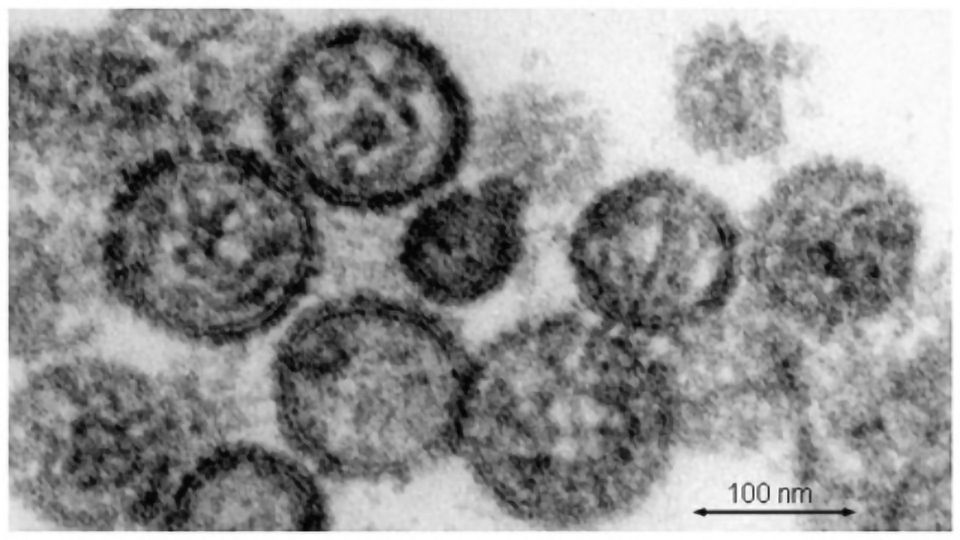First Animal-to-Human Transmission of Deadly Hantavirus Identified in Germany

Complete the form below to unlock access to ALL audio articles.
A group of researchers from Charité – Universitätsmedizin Berlin have confirmed Germany’s first-ever case of animal-to-human transmission involving a specific species of virus known as the ‘Seoul virus’. Working alongside colleagues from Friedrich-Loeffer-Institut (FLI), the researchers were able to confirm the presence of the virus in a young female patient and her pet rat. Their findings, which have been published in Emerging Infectious Diseases*, may influence the way in which we deal with both wild and domesticated rats.
Following multiple outbreaks earlier in the 21st century, hantavirus disease syndromes have gained increasing levels of public attention and were made notifiable in Germany in 2001. The Puumala and Dobrava-Belgrade viruses, for instance, which are common across central Europe and can be spread by numerous types of mice, usually cause acute fever. Occasionally, infection may result in HFRS (hemorrhagic fever with renal syndrome), an illness characterized by fever, low blood pressure and acute kidney failure. The Seoul virus, in contrast, which is mainly found in Asia and transmitted exclusively by rats, is far more likely to cause severe disease. Even outside Asia, however, there have been numerous reports of rat-to-human transmission of this highly virulent virus.
For the first time, a team of researchers led by Prof. Dr. Jörg Hofmann, Head of the National Consultant Laboratory for Hantaviruses at Charité’s Institute of Virology, has been able to describe an autochthonous (i.e. acquired in Germany) case of Seoul virus infection transmitted by a rat. Working in close collaboration with a team of researchers led by Prof. Dr. Rainer G. Ulrich at the Friedrich-Loeffler-Institut (FLI) in Greifswald and colleagues at both local and regional health authorities, the researchers were able to identify the virus in samples from a young female patient from Lower Saxony and her pet rat. “The virus originally comes from Asia and was probably carried to Europe by wild rats on ships. However, it had not previously been observed in Germany,” says the study’s first author, Prof. Hofmann. The infected rat, which had been bred for domestic life, is likely to have been imported from a different country.
After developing symptoms of acute kidney failure, the young patient required intensive care treatment and was hospitalized for several days. Serology testing quickly confirmed a suspected diagnosis of hantavirus infection. The species of hantavirus responsible, however, remained unclear.
Working at Charité’s specialist hantavirus laboratory, Prof. Hofmann and his team of researchers developed a special molecular diagnostic technique capable of identifying the Seoul virus in samples collected from the patient. Using the same technique, experts at the Friedrich-Loeffler-Institut were able to confirm that the patient’s pet rat had been infected by the same virus. Explaining the results, Prof. Hofmann says: “Both viral sequences – the patient’s and the rat’s – were identical. This confirms that the disease was transmitted by an animal to a person – which means it is a zoonotic disease.”
“Until now, only contact with mice would result in a suspected diagnosis of hantavirus infection. It will now be necessary to consider the possibility of infection after contact with either wild or domesticated rats as well,” caution the study’s authors. “The fact that this pathogen has been confirmed in a pet rat also means that the virus is capable of being exported, via the trade in these animals, practically anywhere in the world.” Those keeping rats are therefore advised to exercise caution.
Reference
Hofmann J, Heuser E, Weiss S, et al. Early Release - Autochthonous Ratborne Seoul Virus Infection in Woman with Acute Kidney Injury - Volume 26, Number 12—December 2020 - Emerging Infectious Diseases journal - CDC. doi:10.3201/eid2612.200708
This article has been republished from the following materials. Note: material may have been edited for length and content. For further information, please contact the cited source.

